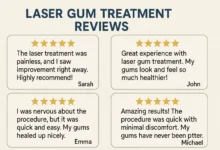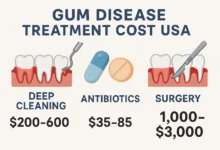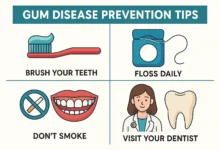Gum Graft Surgery Recovery Time: How Long Does It Really Take?
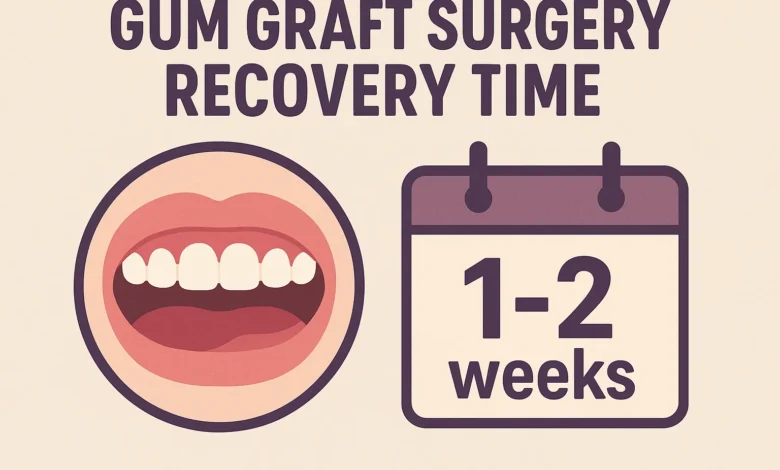
Gum Graft Surgery Recovery Time: Your Realistic Week-by-Week Guide
When you are facing a gum graft surgery, you are packed with one major question; What will my life be like during the gum graft surgery recovery period? Maybe you are concerned about the pain, the duration you are going to spend being off work or whether you can go back to normal eating. A review of the literature published in the International Journal of Periodontics and Restorative Dentistry (2024) confirms that realistic pre-operative knowledge of the gum graft surgery healing time is the most important factor in patient satisfaction and successful outcome.
This effective manual is to be your complete roadmap. We will take you through a day in, day out gum graft surgery recovery process with normal healing and cause of concern. You will know what to expect, how to deal with pain and the dos and dons that must be observed during the recovery process, the difference between a successful and a complex recovery. We will take the mystery out of the process and empower you to have a successful healing process.
What to Expect Immediately After Gum Graft Surgery (The First 24-48 Hours)
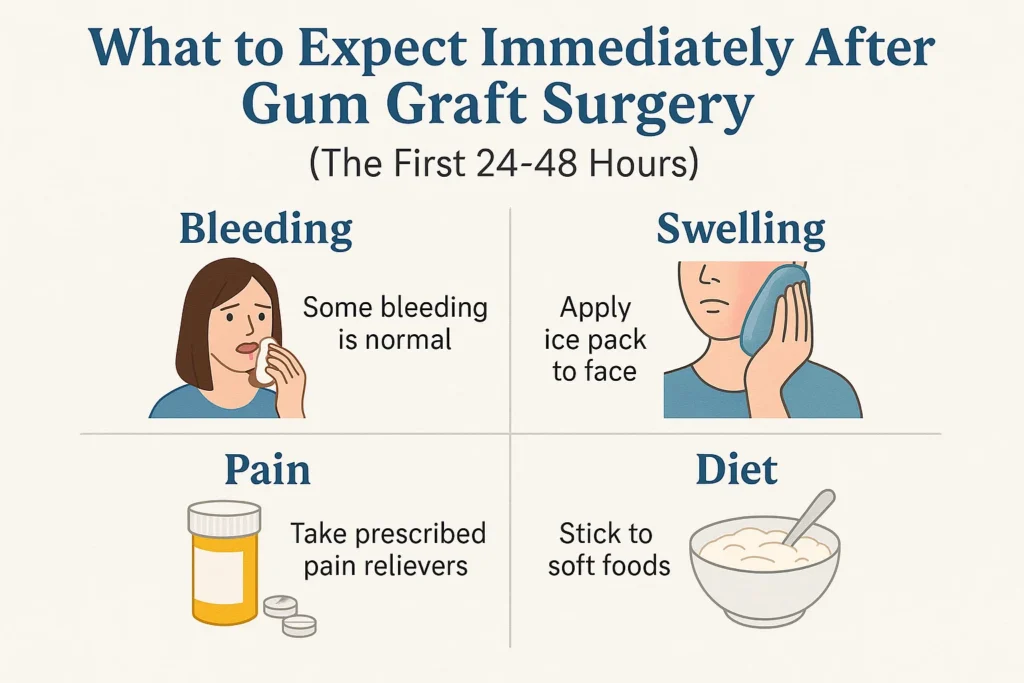
The first two days are the most critical for setting the stage for proper healing. Your primary goals during this phase are to manage bleeding, control swelling, and minimize disruption to the surgical site.
The First Few Hours: Bleeding and Numbness
As the local anesthesia wears off, you will experience some bleeding or oozing from the surgical area. This is normal.
- Bite C firmly on Gauze: Your surgeon will adhere a pad of gauze to the graft area. Squeeze using strong steady pressure by biting at least 30-60 minutes. In case of continuing bleeding, and change a fresh moistened pad of gauze and continue the pressure.
- Treatment of Numbness: Your lip, cheek and tongue are numb and you will have many more hours to go. Please, be very careful not to bite these places. Is it possible to drive following gum graft surgery? No. As a result of anesthesia and the possibility of post-operative pain, you need to be driven home.
Swelling and Pain Management
Swelling typically peaks 48-72 hours after surgery. To manage it effectively:
- Apply Cold Compress: The first 24-36 hours is to use an ice pack to the outside of your cheek with time intervals of 20 minutes on and 20 minutes off. That is the best method of eliminating swellings and numb pain.
- Medication Procedure: Take your pain killers before the numbness completely passes so that you can be ahead of the pain. Take antibiotic as directed in case you were on the same.
Pro Tip: Sleep with your head elevated on 2-3 pillows for the first few nights. This simple action uses gravity to help minimize swelling.
The Gum Graft Recovery Timeline: A Week-by-Week Visual Guide
Understanding the stages of healing can alleviate anxiety. Here’s a realistic breakdown of the gum graft recovery timeline.
Week 1: The Initial Healing Phase
- Days 1-3: It is the most uncomfortable period. Anticipate edema, average pain that can be treated by use of medication, and soft cool-food diet. The area where the graft will appear will be white, gray, or yellow- it is the protective fibrin clot and this is a good indication, not pus. Do not disturb it.
- Days 4-7: The bloating and pain should have reduced tremendously. It might also be possible to switch to warmer and gentler foods. New blood vessels will form hence the color of the graft will start pinkening up. The stitches can begin to unravel or become loose.
Can you smile after gum graft surgery in week 1? It’s best to minimize wide smiling and facial expressions that stretch the surgical area, as this can put tension on the delicate new graft.
Week 2: The Transition Phase
- Majority of the external edema has disappeared. The pain is usually mild and can be controlled by taking over the counter pain killers (assuming that your surgeon gives you this go-ahead).
- The graft location will be more natural and still might be uneven or bulky. This is normal. The tissue is in the process of remodelling.
- During this week, many patients are comfortable going back to work and engaging in a light social activity.
Weeks 3-4: Tissue Remodeling and Maturation
- The graft still merges with the adjacent gum. It will be easier and more natural to look at.
- In cases of non-dissolvable stitches, they are usually taken off at the 2-weeks interval.
- You can be checked to continue very softly brushing the area using a toothbrush that is of ultra-soft nature.
Months 2-6: Full Maturation
- The healing duration of the gum graft to final and stable outcomes is several months. The tissue will be completely developed, gel and attain its ultimate shape and color.
- To ensure this progress, your periodontist will provide follow-up appointments.
The Do’s and Don’ts: Your Essential Guide to a Smooth Recovery
Adherence to these guidelines directly impacts your recovery from gum graft surgery and the long-term success of the procedure.
The “Do” List: Promoting Healing
- DO stick to a soft, cool diet for the first week (e.g., yogurt, pudding, mashed potatoes, smoothies, lukewarm soup).
- DO stay hydrated by drinking plenty of water.
- DO gently rinse with a prescribed antimicrobial mouthwash (like chlorhexidine) as directed, usually starting 24 hours after surgery.
- DO get plenty of rest. Your body heals best when it’s not stressed.
The “DON’T” List: Avoiding Complications
- DON’T rinse, spit, or use a straw vigorously for at least the first week. The suction can dislodge the blood clot protecting the graft (a condition called “graft failure”).
- DON’T smoke or use tobacco products. Nicotine constricts blood vessels, severely restricting blood flow and dramatically increasing the risk of graft failure.
- DON’T brush or floss the surgical site until your dentist gives the clear signal (often after 2-4 weeks).
- DON’T consume hot foods/drinks, spicy foods, crunchy foods (chips, nuts), or acidic foods (citrus) for the first 1-2 weeks, as they can irritate the site.
- DON’T engage in strenuous exercise or heavy lifting for at least one week, as this can increase blood pressure and cause bleeding.
Gum Graft Surgery Recovery Pain: What’s Normal and When to Worry
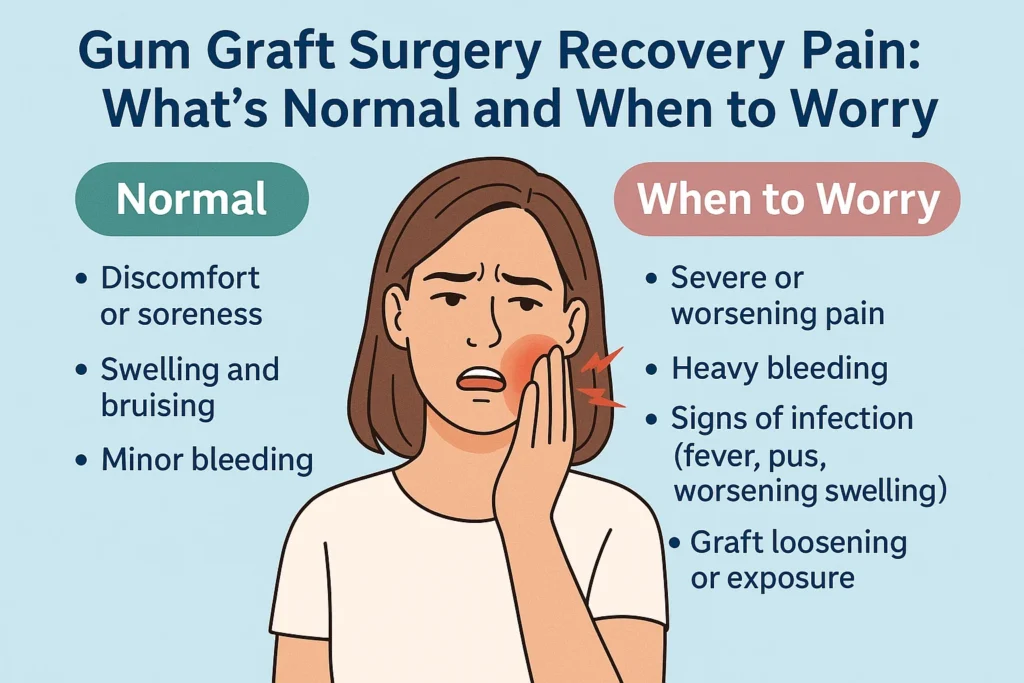
It’s normal to experience discomfort, but how can you distinguish it from a problem?
Normal Sensations
- Aching or throbbing in the first 3-5 days.
- Tightness or pulling at the surgical site.
- General soreness in the jaw from keeping your mouth open during the procedure.
- Increased tooth sensitivity in the surrounding teeth, which usually subsides.
Red Flags: When to Call Your Surgeon
Contact your periodontist immediately if you experience:
- Profuse, uncontrolled bleeding that doesn’t slow with firm pressure.
- Signs of infection, such as pus, a foul taste that won’t go away, or a fever over 101°F.
- Severe, escalating pain that is not relieved by your prescribed medication.
- Numbness that persists beyond 24 hours.
- You suspect the graft has completely detached.
Comparing Recoveries: Gum Graft vs. Other Dental Surgeries
Understanding how gum graft surgery recovery time compares to other procedures can set realistic expectations.
| Procedure | Initial Recovery (Back to Work/Normal Diet) | Full Tissue Healing | Key Recovery Challenge |
|---|---|---|---|
| Gum Graft Surgery | 3-7 Days | 2-6 Months | Protecting the delicate graft from disruption (no spitting, straws, etc.) |
| Tooth Extraction | 1-3 Days | 1-2 Weeks (socket closes) | Preventing dry socket by protecting the blood clot |
| Dental Bone Graft | 3-5 Days | 4-9 Months (for bone fusion) | Similar to gum graft, but often less surface-level discomfort |
| Dental Implant Placement | 1-3 Days | 3-6 Months (for osseointegration) | Allowing the implant to fuse with the jawbone without disturbance |
Root Canal Procedure Explained: How It Works and Why It’s Important
Frequently Asked Questions (FAQ)
How long does gum graft surgery take?
The actual process usually requires 60-90 minutes per tooth area under treatment based on the complexity of the process, and also the number of teeth undergoing the procedure. This does not entail pre-operative preparation and post-anesthetic recovery.
How soon can I normally eat after a gum graft?
A normal diet may be gradually resumed by most patients after 1-2 weeks. The first week should be spent with very soft foods, after which additional solid foods should be gradually introduced when one feels comfortable. Solid, crispy, or chewable food (such as chips or steak) should not be placed close to the graft site at least in a month to avoid trauma.
What is the reason my gum graft is white?
Film on top of graft site that is white or yellowish is a normal occurrence during the first week. It is a layer of fibrin, the layer of the protection scab, which appears in the process of natural healing of the body. It is neither pus nor an indication of infection. Under it, the healthy and pink gum tissue will slowly develop.
Is it common of the graft to be loose?
The graft is held together at the beginning of the first few days using stitches and the fibrin clot. It can be “different” or “bulky” it should not be moving freely or flapping. In case you find a piece of tissue which is obviously detached, and mobile, involve your surgeon in an examination.
How many days on soft food diet?
The first 5-7 days should be put on a rigid, cold food diet. Once this has happened you can gradually start to add more warmer and slightly textured foods, however, you must not chew directly at the point of graft as a minimum of two and often more weeks, as recommended by your surgeon.
Conclusion: Patience is the Key to a Successful Recovery
The process of gum graft surgery recovery time is a patience one which demands careful attention. The first week following gum grafting is a difficult moment but it is a temporary period that will results in a long-term solution when it comes to gum recession, keeping your teeth safe, and your teeth healthy in the long-term.
It is important to keep in mind that your periodontist is your best friend. Take their special prescriptions and appointments, keep them all, and do not be afraid of calling them with any questions. Knowing how the time to recover kicks off the healing process in a gum graft procedure and following a time-tested list of gum graft surgery recovery tips, you are putting in a vote of success in your gum graft surgery process and the overall well-being of your smile.
Next step: In case you are about to go through surgery, then follow this guide and prepare a comfortable home-based recovery area with soft food stuffs, ice packs and keeping your medicines ready. In case you are in the healing process, have faith in the process, take care of yourself and be sure that every day you get closer to having a completely healed, healthy smile.
Medical Disclaimer: This paper is informational in nature and is not a form of medical advice. It is always advisable to take the post-operative instructions of your periodontist or oral surgeon.
